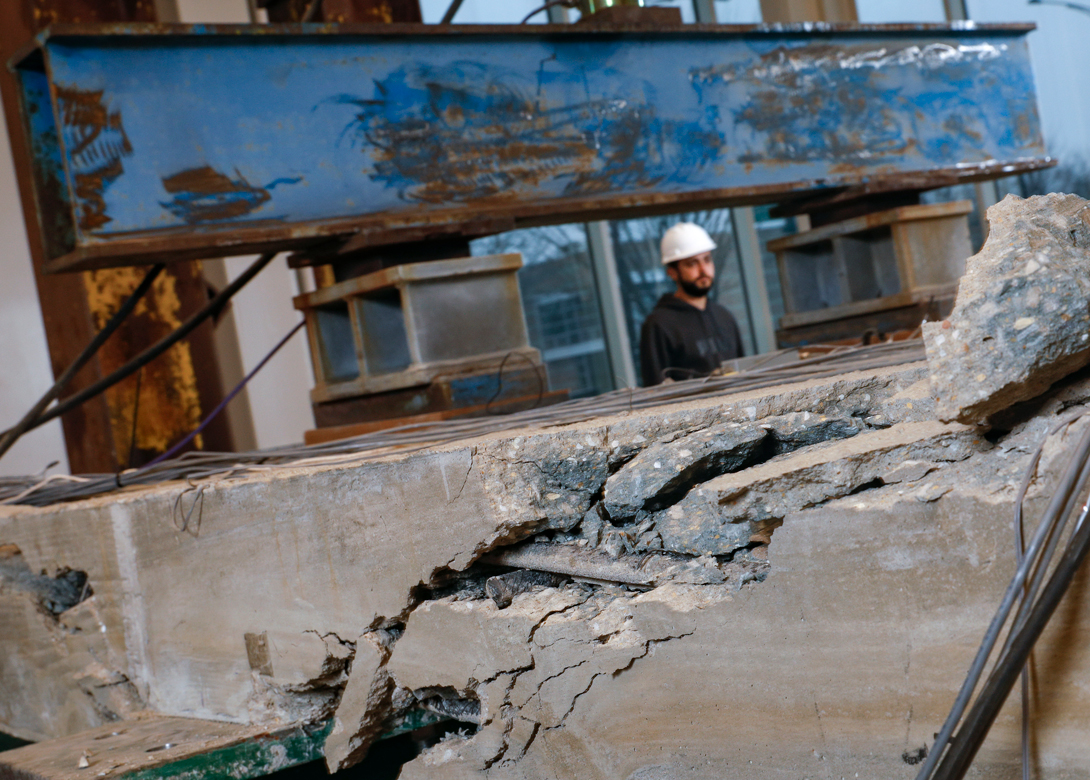Big space, big innovations
1

For researchers who need to perform large-scale infrastructure testing, there aren’t many spaces in the Chicago area that can accommodate them. UIC’s High-Bay Structures Laboratory, however, is one that can.
This spring, UIC engineers used the lab to conduct two simultaneous experiments on a 10-foot-wide bridge deck — one to test its overall health and another to reinforce it with new materials.
While normal reinforcements on bridge decks are made from steel, they can suffer corrosion from the exposure to de-icing salt and from the high load on the pavement. To fix this, Mohsen Issa — a professor in the civil, materials, and environmental engineering department — replaced the steel reinforcement with fiber-reinforced polymer made from basalt, which is sourced from volcanic rock.
Using basalt fiber-reinforced polymer (BFRP) bars is a breakthrough, as it has the potential to significantly increase the service life of bridge decks. “The BFRP bar strength is about three times stronger than steel, and the weight is about one-fourth to one-fifth the weight of steel,” Issa said. “Additionally, there is no corrosion and it’s nonconductive.”
The basalt-based reinforcements also do not deform the same way that steel does, and they can handle a significant amount of load before failing. More testing on single-span and two-span continuous bridge decks are underway in the lab to develop a design document for implementing BFRP bars as internal reinforcement in bridge decks for the Illinois Tollway.
While Issa and his team were conducting their experiment, Didem Ozevin — another professor in the department — and her team collected acoustic emissions data on the same bridge deck as a way to detect the damage progression and to develop a structural health assessment approach. As hydraulics applied pressure, the sensors detected and measured the damage on the inside of the slab before any cracks developed on the exterior.
“The ability to test large-scale systems in the High-Bay brings tremendous opportunities to validate structural health monitoring methods in which data from smaller experiments is limited,” Ozevin said.